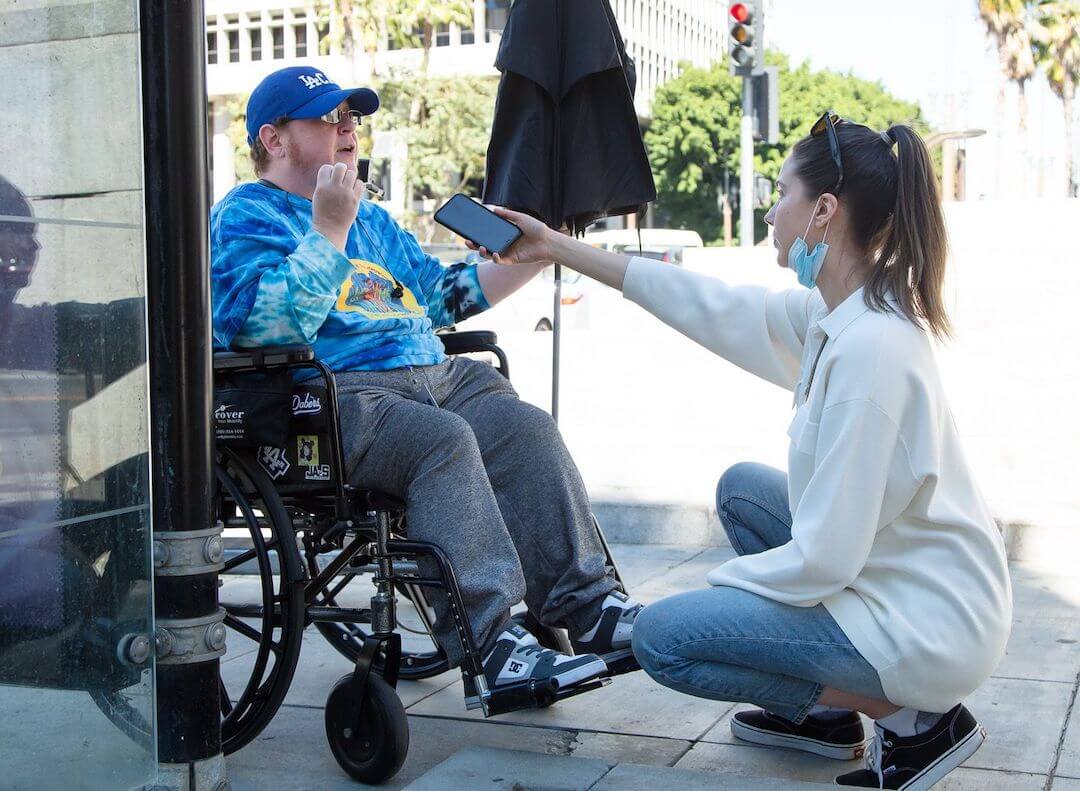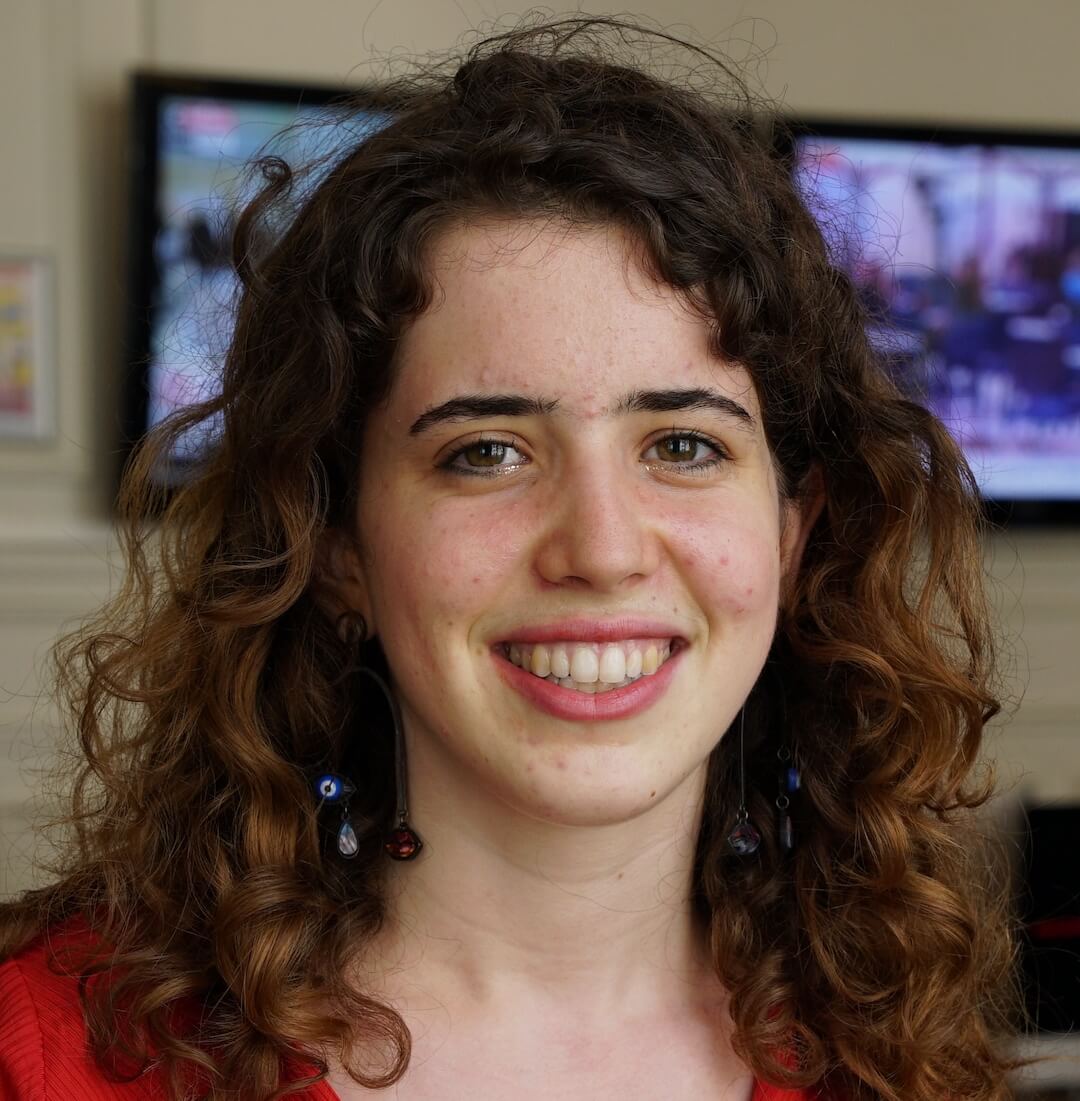When Isabel Bonnet graduated from Columbia Journalism School in May 2022, she was offered two positions — a remote video editor at an American publishing company that owns multiple local newspapers in the country and a internship in London for NBC.
But as an international student graduating from Columbia’s Master of Science program, she could only get a one-year work visa in the United States.
“[NBC London] told me that if I did a good job, I could stay and they were very accommodating to me,” she said. She was thankful to the U.S. company for being honest. “‘Sorry, we don’t sponsor visas. Our offer is only for a year,’” Bonnet remembers being told. “After that, I’d have to leave the country.”
While all her friends remained in New York, she decided to start over and move to London.
“Other people had the luxury of choosing between what’s best for their career. For me, it was just what’s best for my visa situation,” she said.

Salman Ahad Khan (Photo by Shakeeb Asrar)
Salman Ahad Khan, a December 2022 graduate from the Masters of Arts program at the City University of New York’s Craig Newmark School of Journalism, had a smoother transition. Khan had been interning at WNYC as part of his last-semester placement.
While international students are often advised to stay away from local media because they rarely offer sponsorship due to its high cost, Khan was able to get a full-time position as an associate producer because his visa, unlike Bonnet’s, was three years. “[The longer visa] helped them make the case for why it wouldn’t be a long term problem for them to hire me,” he said.
After an international student graduates from a degree in the United States, they can work in the U.S. through the yearlong Optional Practical Training program. Hiring a graduate on OPT does not cost an employer anything, but it also doesn’t obligate them to sponsor the graduate when the year is up.
In 2008, the Department of Homeland Security started allowing students who had majored in a designated STEM (Science, Technology, Engineering and Math) field of study to apply for a 17-month extension of their one-year OPT program. In 2016, that extension was lengthened to 24-months. To benefit from it, employers have to register for free with an online system called E-verify.
An increasing number of journalism and media programs are being reclassified to fall under the Classification of Instructional Programs’ Digital Communication and Media/Multimedia code, which has been designated as STEM since 2011.
How can a program training future journalists can fall under STEM? According to the DHS, a program may offer this extension if it “focuses on the development, use, critical evaluation, and regulation of new electronic communication technologies using computer applications; and that prepares individuals to function as developers and managers of digital communications media.”
The guidance elaborates, stating this can include, “… instruction in computer and telecommunications technologies and processes; design and development of digital communications; marketing and distribution; digital communications regulation, law, and policy; the study of human interaction with, and use of, digital media; and emerging trends and issues.”
Programs that have recently reclassified their CIP as Digital Communications and Media include New York University’s journalism program in 2014, all journalism programs at CUNY since 2017, University of California, Berkeley in 2018 and some programs at the Medill School of Journalism, Media, Integrated Marketing Communications at Northwestern University in 2020.
Administrators at UC Berkeley Graduate School of Journalism and Northwestern are quick to dismiss the implication that they changed their journalism programs to fit into the CIP code. They argue instead that the journalism industry has increasingly valued technical skills over the course of ten years, and their programs have adapted to this reality.
Gordon Stables, Director of the University of Southern California Annenberg School for Communication and Journalism says the school is looking into whether its Master of Science Journalism can fit into the digital and communications code. That conversation is happening in part because students and alumni brought it to their attention.
Other schools have created new programs with the STEM designation in mind, like Columbia’s Data Journalism Program since 2018 and Northeastern’s new Media Innovation and Data Communication MS, which will welcome its first full cohort in the fall. John Wihbey, an Associate Professor, says that a couple years ago, while talking to international students, he realized how hard it was for them.
“You’re only a few months into your new job, after graduating, and already, you’re asking for sponsorship,” he said. Some journalism students who were in the media innovation track were able take the extra requirements and graduate with the STEM designation.
The STEM designation is confusing and often employers don’t understand it. International students are seen as an expensive headache an employer would be better off avoiding.
Bonnet, who came back to the United States to study in a STEM-designated MS Data Visualization program at the Parson’s School of Design, says it is hard to explain the designation.
“Two different companies have ended interviews after I said I’m not American,” she said. “We don’t consider people who need to be sponsored. I tried to tell them they don’t need to sponsor me. But then they were still like, ‘yeah, that sounds complicated.’”
A longer OPT gives companies more time to learn the sponsorship system, which will potentially cost them thousands in lawyer fees. The so-called “employer sponsorship” is through an H-1B visa, which is awarded through a lottery system that costs $10 to enter. Only one entry is allowed per person per year, but, as Khan puts it, more years on OPT means more entries.
Applying for an O-1B visa, for applicants with “extraordinary ability,” is an option that doesn’t require an employer to pay. But to build the kind of portfolio that can be deemed extraordinary — and save roughly $8,000 in attorney fees — three years are better than one.
With so many hurdles, many international students conclude that it is easier to go back home.

Isabella Zavarise
Isabella Zavarise, who graduated from USC with a master’s degree in Specialized Journalism in May 2022, ended up moving back home to Canada before her one-year OPT ran out.
Having only one year to convince an employer to sponsor her had steered Zavarise away from her goal of being a local journalist, since most publications don’t sponsor. She would have loved to do a program like Report for America, which is a two-year program but only considers students who don’t need sponsorship.
Instead, she did a six month fellowship with Insider in Los Angeles, knowing they had bureaus all around the world and that she could be sponsored or transferred there. At the end of her fellowship, Insider told Zavarise the money wasn’t there to hire her, especially with her OPT being halfway completed already. That was fine with Zavarise, who missed local journalism. Now, she works with her local TV station, CTV Vancouver.
Khan says that within the current journalism job market, a STEM degree doesn’t solve all the problems. “The job market is really tight. People are still struggling to find the right position for themselves. But I do know that having the option of STEM OPT gives people a lot more flexibility than they would have if they didn’t have that option.”
Correction, Aug. 8, 2023: This story was updated to correct outlet and location information in the lead photo caption. Also, Isabel Bonnet’s original offer from NBC in London was an internship.








My experience as a specialized computer technical journalist says yes to STEM. In the 90’s, I submitted articles as text, they got edited and someone else did the photos. I took a hiatus and got back in the tech writing business. Now, I have to submit my pieces as web-ready, the equivalent of the old time camera ready. I do my own screen shots and photos, process and format them, inserting them in the article with “figure” captions to describe them. This is a major league shift in responsibilities for authors, and highly technical. Being highly technical with lots of other experience, I can do it.